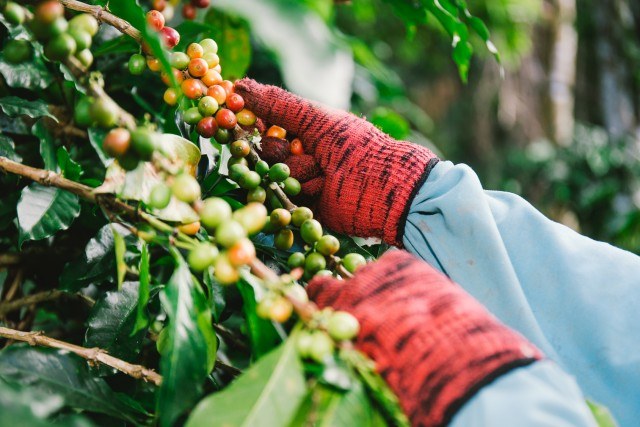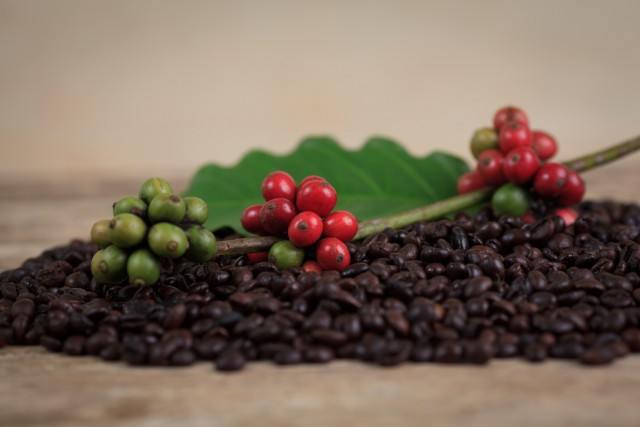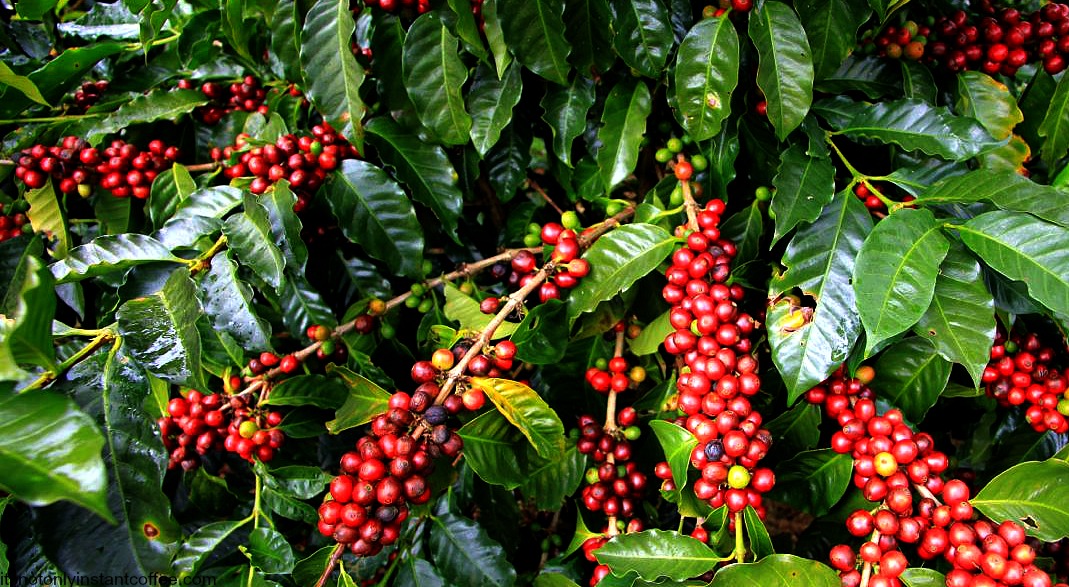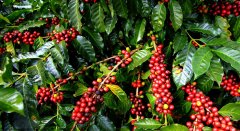The famous high "mountain" coffee on the coffee map introduces the effect of coffee planting altitude on the flavor.
For professional baristas, please follow the coffee workshop (Wechat official account cafe_style)

There are some mountain-named coffee beans, such as Blue Mountain and Kilimanjaro. The flavor and taste of coffee beans growing up at high altitude will become very good, won't they? Today I will introduce "the high differences that affect the quality of coffee".
Conditions for planting coffee trees
Rainy and dry season environment, annual rainfall of 1800 mm to 2500 mm
Plant shade among coffee trees and keep moderate sunlight
Annual average temperature 20 °C
The soil is fertile, well drained and slightly acidic.
Coffee trees grow in the subtropics at 30 degrees south latitude, just below the equator, known as the coffee belt. To a limited extent, the coffee field will not grow unless the above conditions are met. The mountains and highlands will meet environmental conditions that meet such stringent conditions.
At higher altitudes, higher quality coffee grows

As long as the coffee tree meets the environmental conditions, the coffee tree can be planted and you can harvest the fruit of the coffee. However, it is said that coffee grown at high altitudes produces higher quality coffee. The reason is that when the temperature difference between day and night is large, the seeds of coffee cherries harden and the taste condenses.
Very uncomfortable temperature difference Toshimaru seed is one of the characteristics of the plant, in the case of coffee cherries, and in the plain, such as sour, aroma grown coffee, the taste will appear a more distinctive function I will.
The brand name of origin and mountain name
I will introduce the coffee of the mountain name.
-Mount Kilimanjaro, Tanzania-
Coffee beans are grown at the foot of Mount Kilimanjaro, the highest continent in Africa. This is a coffee, you can enjoy the bright acidity and sweet and sour aroma.
-Crystal Mountain, Cuba-
Coffee beans are grown in mountainous areas where crystals can be collected. It is a kind of coffee characterized by soybeans and beautiful beans, which can enjoy mild aroma and mellow flavor.
-Costa Rica Coral Mountain-
Coffee beans, the Talas River and triangles connecting collarijo are grown on the steep slopes of the Costa Rican capital of San Jose. This is a coffee, you can enjoy rich aroma and rich.
-Mount Gayo, Sumatra, Indonesia-
Coffee beans are grown on rich natural land and rich land in the mountains. Using organic farming technology, enjoy a balanced taste and aroma of coffee.
-Emerald Mountain of Colombia-
Coffee beans are grown on steep slopes in the foothills of the Andes. This is a coffee where you can enjoy the sweetness and richness of Colombian beans.
-Jamaica Blue Mountains-
Coffee beans grown in the Blue Mountain area of the Blue Mountains. This is a coffee, you can enjoy the elegant smell and rich taste.
Coffee with a well-known brand
There is also a brand of coffee that represents the height, not the name of the mountain.

Karm Brazil
The highland is planted more than 1000 meters.
Toraya Indonesia
1200 meters in the mountain area
Mexico Alzura
Alzura means the highest height in Mexico.
Honduras SHG / El Salvador SHG / Guatemala SHG
SHG, this is the back of the name, which means the height is as high as Alzlar.
The height of coffee is an indicator of quality.
Coffee, which was raised on the plateau, has a remarkable feature compared to those lowlands, cultivated, because the harvest itself is difficult, because it gives coffee beans, coffee producing areas, varieties, and screen tastes have a great impact. Similarly, this is one of the criteria for determining grades.
Summary of elevation differences affecting Coffee quality
Coffee trees are at high altitudes, coffee cherry seeds grow tight and hard, because the taste is condensed than coffee, which is in plain areas, such as sour, aroma grows, the flavor will appear more strongly. It is said that it is characterized by high quality, and the price also rises due to difficulties in cultivation and harvest, and seems to tend to become a high-end product. In addition, even in determining the quality of coffee, so we attach importance to high altitude, high local production of coffee beans from the same origin, which also seems to have an interesting finding trying to produce drinking water lower than the lower local production. Why not try to choose high coffee beans?
Important Notice :
前街咖啡 FrontStreet Coffee has moved to new addredd:
FrontStreet Coffee Address: 315,Donghua East Road,GuangZhou
Tel:020 38364473
- Prev

Introduction to the natural sun treatment of coffee beans what are the characteristics of the flavor of natural sun-cured coffee beans
For professional baristas, please follow the coffee workshop (Wechat official account cafe_style). Have you ever seen a coffee shop written in honey treatments such as sun or water washing? This is how to improve coffee beans. Today I will introduce coffee to the sun. Sun treatment is one of the ways to treat raw coffee beans. A picked coffee cherry is a concrete squat called a patio.
- Next

A comparison between the flavors of rose summer grown in Colombia and that of Panama
For the exchange of professional baristas, please follow the coffee workshop (Wechat official account cafe_style) Columbia boutique coffee producing area: Cauca-CafedeCauca Cauca province, Caucadepartment, the name comes from Cauca River, CaucaRiver. Located in southwestern Colombia, it is Goran with NarinoDepartment and HuilaDepartment provinces.
Related
- Beginners will see the "Coffee pull flower" guide!
- What is the difference between ice blog purified milk and ordinary milk coffee?
- Why is the Philippines the largest producer of crops in Liberia?
- For coffee extraction, should the fine powder be retained?
- How does extracted espresso fill pressed powder? How much strength does it take to press the powder?
- How to make jasmine cold extract coffee? Is the jasmine + latte good?
- Will this little toy really make the coffee taste better? How does Lily Drip affect coffee extraction?
- Will the action of slapping the filter cup also affect coffee extraction?
- What's the difference between powder-to-water ratio and powder-to-liquid ratio?
- What is the Ethiopian local species? What does it have to do with Heirloom native species?

